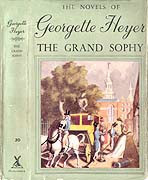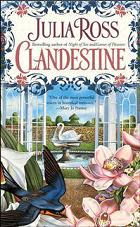 First, this post is NOT about the relative merits of romances called “sweet” versus romances called “spicy”. It’s about how the terms themselves. I’ve disliked the designations of “sweet” versus “spicy” (or sometimes “hot”) for a long time. Somewhere online I recently saw “sweet” equated to “clean” and decided I wanted to blog about it.
First, this post is NOT about the relative merits of romances called “sweet” versus romances called “spicy”. It’s about how the terms themselves. I’ve disliked the designations of “sweet” versus “spicy” (or sometimes “hot”) for a long time. Somewhere online I recently saw “sweet” equated to “clean” and decided I wanted to blog about it.
I realize the industry needs an easy way to describe the level of sexuality in a romance, especially since some readers (unlike me) have strong preferences one way or the other.
But I still don’t like the terms.
 “Sweet” can translate to “cute” or “safe”. It doesn’t do justice to the fiercely clever characterizations and witty dialogue in a Jane Austen or a Georgette Heyer. Or to romances that have dark themes but don’t happen to take the characters to the bedroom.
“Sweet” can translate to “cute” or “safe”. It doesn’t do justice to the fiercely clever characterizations and witty dialogue in a Jane Austen or a Georgette Heyer. Or to romances that have dark themes but don’t happen to take the characters to the bedroom.
“Spicy” or “hot” makes me think of Buffalo chicken wings but my bigger concern is this: that I’ve seen “sweet” romance defined as romance that focuses on the emotional development of the relationship–implying others focus on the sex alone. “Spicy” or “hot” just don’t do justice to the body/mind/soul sort of lovemaking you find in a Laura Kinsale or Julia Ross.
It’s hard to think of better terms though. I can come up with definitions but it’s hard to come up with single words that don’t either imply “sweet” romances are uptight or “hot” romances are trashy. “Clean” vs “dirty”? “Chaste” vs “sexy”? See what I mean? At least both “sweet” and “spicy” can be thought of as good things.
But two terms aren’t enough anymore.
All About Romance has a Sensuality Ratings Guide that defines levels from “Kisses”, “Subtle”, “Warm”, “Hot and “Burning”. Their definitions look useful and pretty optimal to me, despite the lingering chicken wing connotations.
So what do you think? Are you content with the old definitions of “sweet” vs “spicy”? Do you have other ideas to suggest?
Elena
www.elenagreene.com

I prefer numbers to words: a scale from 1 to 10, where 1 is a kiss or two and 10 is romantica.
BTW, love that cover for The Grand Sophy.
Elena, you cover the subject so well that I don’t have much to say, except that I agree with you on almost everything!
I, too, am not thrilled with the term “sweet” — it sounds condescending, childish. But I also agree with you that it may still be the best term we have.
Cara
Elena, I agree too about the sweet and spicy thing–and I like the number system Keira suggests.
I’m not in favor of a ratings system at all, voluntary or otherwise. Words, numbers, categories, are arbitrary and at the discretion of the assigner. One person’s Hot is another’s Ho-hum.
So far, books have largely been able to fly under the radar that has pinned down the wings of other entertainment media, and I’m not eager to see that change.
As far as reader expectation, much can be done with the branding of the line, the author, the cover, and the blurb to indicate content.
I did once, a few years ago, come upon a book shopper browsing the romance shelves and she was looking at Traditional Regency because she did not want to read explicit sexual content.(I didn’t tell her that Trads were no guarantee anymore!) It made an impression on me. I wondered how many readers Romance loses with its focus on sexual content.
So I wish there were some way for the reader to tell what they are getting, but I sure don’t know what it is!
“So I wish there were some way for the reader to tell what they are getting, but I sure don’t know what it is!”
Me, neither! It’s a definite conundrum. I’ve also always kinda disliked the “sweet” description–makes them sound like goody-goody, namby-pamby books, which most trads were definitely not. I never could think of anything better, though.
How is that for a namby-pamby reply? 🙂
I like the terms that AAR use. I’m not hip with the term “sweet”. In fact, like Cara, I agree with everything you said, Elena.
~Andrea
Jane,
I hadn’t thought about the implications of a rating system–and I agree it could be a concern.
I will say however that some of the subjectivity in ratings could be handled by using definitions such as on AAR.
As far as reader expectation, much can be done with the branding of the line, the author, the cover, and the blurb to indicate content.
This I agree with but the problem is that it doesn’t always happen. The packaging for the sexier traditional Regencies was usually the same as for the so-called sweet ones. I have some irate reader mail and a few Amazon bashings over the sensuality level of my stories. Correct packaging might have saved them the disappointment and attracted different readers who would have enjoyed the stories more.
I guess on a personal level that’s how I think of them, almost sweet or hot, but not with the words. . . I guess I have a tendency to think of them as rated G, R, something in between or the like. But it’s purely mentally, I don’t actually use the terms. . . but yep, pretty much agree with all the other comments 🙂
Lois
I like Keira’s idea of a number system. It seems like something little that could go in the corner of the back cover, like a PG rating on a DVD.
I understand that a reader could be jolted if they get something they don’t expect. Like biting into an M&M and getting a skittle instead. 🙂
A number system could prevent that accidental mess with reader expectations.
Are the publishing professionals lurking? Keira’s a genius!
I understand that a reader could be jolted if they get something they don’t expect. Like biting into an M&M and getting a skittle instead. 🙂
I love this analogy, Deb. I can relate to it!
Using “sweet” and romance novel in the same sentence is confusing to some people. Whenever I say I wrote a romance everyone asks about the sex scenes and then I have to explain that there aren’t any. The response is usually “Huh?” and then I have to explain. I think it’s not a bad idea to rate them so people know what they are getting.
Deb said, “Are the publishing professionals lurking? Keira’s a genius!
When I get my act together and actually put up a website, I’m so going to put that quote up in 24-pt bold. 🙂
I have to agree with the number system. It sounds very workable. I like the idea that the writer will not be censored, but the reader will be informed. Does that make sense?
The number system might work but only if the numbers between 1 and 10 are defined in some way–otherwise I think we’d be back to one person’s 3 is another person’s 6.
The part that would really concern me (given the conservative elements in our population) is there might be a movement to crack down on anything above X, or shelve it differently, or not allow it in libraries.
The best solution would be for publishers to use the packaging (cover, back blurb) to properly reflect the sensuality level. Given that that doesn’t always happen, the next best thing is for reviewers to identify the SL for readers who wish to know.
Sorry! I think I’m back to where I started in this discussion.
I figure that if an author has seduced me by his/her voice, I’m his/hers to be done with as they wish. I’m a timid person in the real world but a thrill-seeking adventurer between covers. Some of my most profound reading pleasures have been of being taken where I didn’t expect to go and given the privilege of understanding another new and different sense of what’s compelling and erotic.
And some of my hottest romance moments have been little evocative bits about a hand or a wrist or a glove or a fleeting fantasy, in a book I then discover All About Romance has rated as “kisses.”
It’s the authorial voice in control that makes me loosen my defenses, especially when the voice dips into its deep velvet registers: Janet’s Miss Wellesley-Clegg musing how bonnets and husbands are alike: she doesn’t want one that will bore her, “and we must suit each other very well.” Sweetie, I’m yours.
Elena wrote:
The number system might work but only if the numbers between 1 and 10 are defined in some way–otherwise I think we’d be back to one person’s 3 is another person’s 6.
Hmm. Rather than just be a rating from 1 to 10, you could have the number actually mean something! Such as: number of articles of clothing removed in the course of the book. (Of course, you’d have to renormalize between contemporary books and books set in an era when they wore a lot more clothes. 🙂
Or it could be the number of cold showers you have to take while reading the book.
Or the beats-per-minute elevation of the pulse rate.
Or instead of numbers, you could use little icons. Like a glove for “they touch with bare fingers at least once,” lingerie for “clothing flies at some point,” or…I don’t know. Whipped cream and nutella??
Todd-whose-mind-is-already-reeling